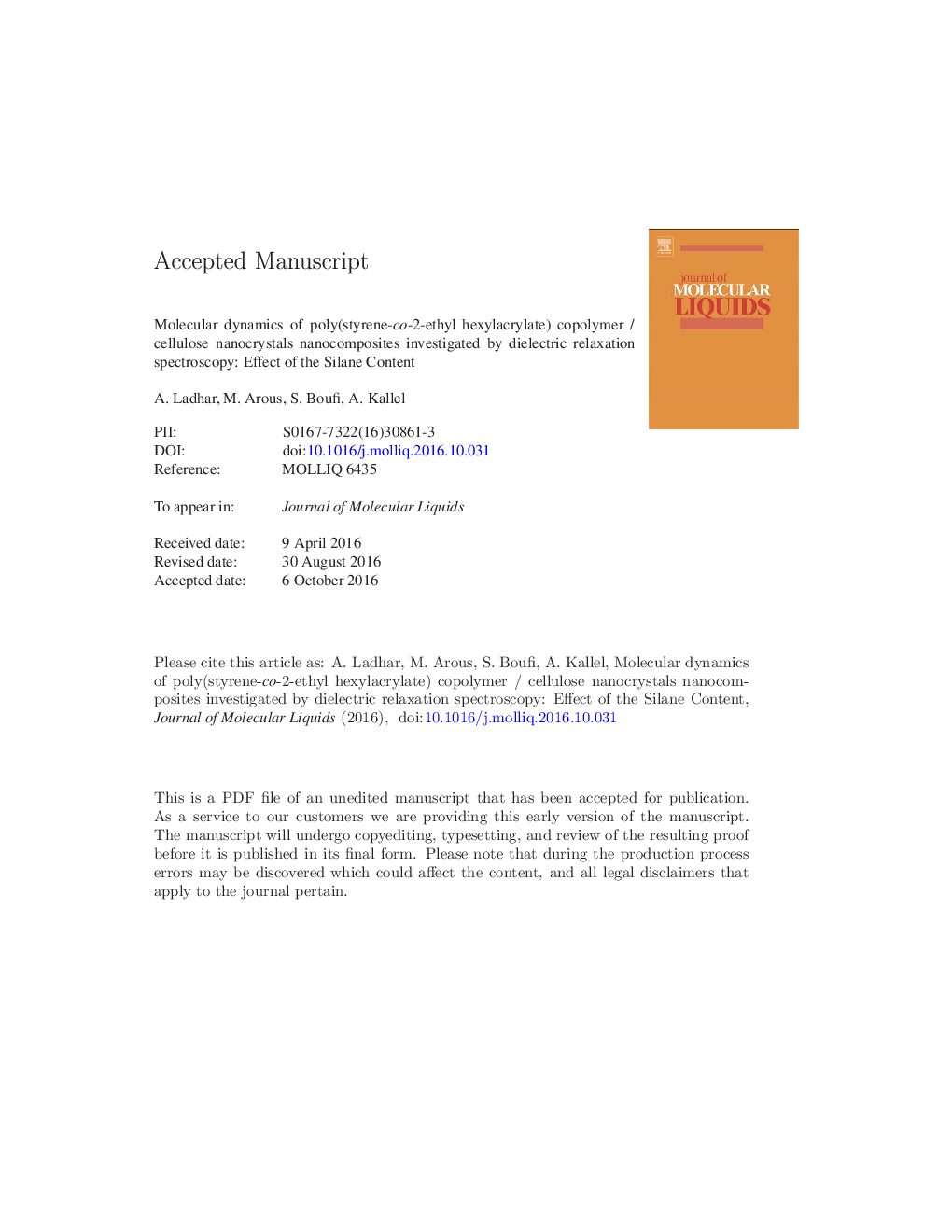| Article ID | Journal | Published Year | Pages | File Type |
|---|---|---|---|---|
| 5409363 | Journal of Molecular Liquids | 2016 | 43 Pages |
Abstract
The dielectric spectra of a series of poly(styrene-co-2-ethyl hexylacrylate) copolymer/cellulose nanocrystals nanocomposites were investigated. The filler content of cellulose nanocrystals (CNC) extracted from the rachis of date palm tree was fixed at 4% in weight. The study looks at the effects on dielectric behavior as a result of the γ-methacryloxypropyl triethoxysilane (MPS) addition. The dielectric permittivity εⲠand the loss factor εⳠwere measured using a dielectric analyzer in the frequency range of 0.1 Hz to 1 MHz and between the temperature range of â 100 °C and 100 °C. Several notable changes were observed as MPS concentration increased. Dielectric measurements show a α and a β relaxation process associated with the large-scale segmental motion of the main polymer chain and with the localized mobility of the lateral groups, respectively. It was shown that the α relaxation followed the Vogel-Fulcher-Tammann-Hesse (VFTH) dependency. However, the β relaxation obeyed Arrhenius linear behavior. The activation energy for the β relaxation, the strength parameter D for the α relaxation and the relaxation strength Îε for both relaxation processes variations showed a threshold value of 3% in weight of MPS. At low MPS content, silane is mainly located at the surface of the copolymer and it affects the dipole mobility without preventing the formation of percolation network. At high MPS content, silane is also adsorbed onto the cellulose nanocrystals surface and it may inhibit the formation of percolation network, leading to agglomerations. The electrical study confirms the dielectric results indicating the higher conductivity for the nanocomposite with 3% of MPS treatment. The frequency dependencies of the conductivity give evidence for an ionic hopping transport mechanism.
Related Topics
Physical Sciences and Engineering
Chemistry
Physical and Theoretical Chemistry
Authors
A. Ladhar, M. Arous, S. Boufi, A. Kallel,
